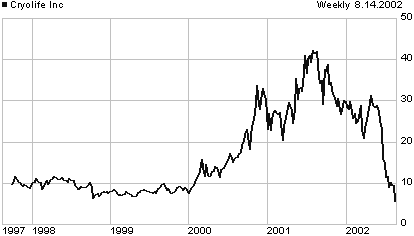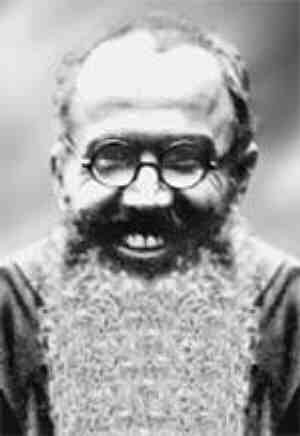1900 Thousands
of Chinese "Boxer" rebels, soldiers, and civilians,
suicide or massacred by the "Foreign Devils"
of the international force arriving for the relief of the diplomatic
quarter in Pekin, besieged by.the "Boxer Rebellion"
since 20 June. ^top^
International forces, including
US Marines, enter Beijing to put down the Boxer Rebellion,
which was aimed at purging China of foreign influence.
In response to widespread
foreign encroachment into China’s national affairs and to famine
in the countryside blamed on the "foreign devils",
Chinese nationalists and peasants had brought the so-called
Boxer Rebellion to Peking on 20 June. Calling themselves I
Ho Ch’uan, or “the Righteous and Harmonious Fists,” the
nationalists occupied Peking, killed several Westerners and
Chinese Christians, and besieged the foreign legations in the
diplomatic quarter of the city.
By the end of the nineteenth
century, the Western powers and Japan had forced China’s ruling
Qing dynasty to accept wide foreign control over the country’s
economic affairs. In the Opium Wars, popular rebellions, and
the Sino-Japanese War, China had fought to resist the foreigners,
but it lacked a modernized military and millions were killed.
In 1898, Tzu’u Hzi, the dowager empress and an anti-imperialist,
began supporting the I Ho Ch’uan, who were known as the “Boxers”
by the British because of their martial arts fighting style.
The Boxers soon grew powerful,
and in late 1899, regular attacks on foreigners and Chinese
Christians began. On June 20, the Boxers, now over 100'000 strong
and led by the court of Tzu’u Hzi, besieged the foreigners in
Peking’s diplomatic quarter, burned Christian churches in the
city, and destroyed the Peking-Tientsin railway line. As the
Western powers and Japan organized a multinational force to
crush the rebellion, the siege of the Peking legations stretched
into weeks, and the diplomats, their families, and their guards
suffered through hunger and degrading conditions as they fought
to keep the Boxers at bay.
On 14 August the eight-nation
allied relief force, mainly British, Russian, US, Japanese,
French, and German troops, relieves Peking and liberates the
legations, after fighting its way through much of northern China.
Under pressure from the United States, and due to mutual jealousies
between the powers, it would be agreed not to partition China
further, and on 07 September 1901, the Peking Protocol would
be signed, ending the Boxer Rebellion. By the terms of agreement,
which was essentially forced on China’s ruling government, the
foreign nations received extremely favorable commercial treaties,
foreign troops would be permanently stationed in Peking, and
China would be forced to pay $333 million dollars as penalty
for its rebellion. From thereon, China was effectively a subject
nation. It never forgot.
PEKING RELIEVED BY MULTINATIONAL
FORCE: During the Boxer Rebellion, an international force featuring
British, Russian, US, Japanese, French, and German troops relieves
the Chinese capital of Peking after fighting its way 130 km
from the port of Tientsin. The Chinese nationalists besieging
Peking's diplomatic quarter were crushed, and the Boxer Rebellion
effectively came to an end. By the end of the 19th century,
the Western powers and Japan had forced China's ruling Ch'ing
dynasty to accept wide foreign control over the country's economic
affairs. In the Opium Wars, popular rebellions, and the Sino-Japanese
War, China had fought to resist the foreigners, but it lacked
a modernized military and millions died.
In 1898, Tz'u Hsi, the dowager
empress, gained control of the Chinese government in a conservative
coup against the Emperor Kuang-hsu, her adoptive son and an
advocate of reforms. Tz'u Hsi had previously served as ruler
of China in various regencies and was deeply anti-foreign in
her ideology. In 1899, her court began to secretly support the
anti-foreign rebels known as the I Ho Ch'uan, or the "Righteous
and Harmonious Fists." The I Ho Ch'uan was a secret society
formed with the original goal of expelling the foreigners and
overthrowing the Ch'ing dynasty. The group practiced a ritualistic
form of martial arts that they believed gave them supernatural
powers and made them impervious to bullets. After witnessing
these fighting displays, Westerners named members of the society
"Boxers." Most Boxers came from northern China, where natural
calamities and foreign aggression in the late 1890s had ruined
the economy. The ranks of the I Ho Ch'uan swelled with embittered
peasants who directed their anger against Christian converts
and foreign missionaries, whom they saw as a threat to their
traditional ways and blamed for their misery.
After the dowager empress returned
to power, the Boxers pushed for an alliance with the imperial
court against the foreigners. Tz'u Hsi gave her tacit support
to their growing violence against the Westerners and their institutions,
and some officials incorporated the Boxers into local militias.
Open attacks on missionaries and Chinese Christians began in
late 1899, and by May 1900 bands of Boxers had begun gathering
in the countryside around Peking. In spite of threats by the
foreign powers, the empress dowager began openly supporting
the Boxers. In early June, an international relief force of
2000 soldiers was dispatched by Western and Japanese authorities
from the port of Tientsin to Peking. The empress dowager ordered
Imperial forces to block the advance of the foreigners, and
the relief force was turned back. Meanwhile, the Peking-Tientsin
railway line and other railroads were destroyed by the Chinese.
On 13 June, the Boxers, now some 140'000 strong, moved into
Peking and began burning churches and foreign residences. On
17 June, the foreign powers seized forts between Tientsin and
Peking, and the next day Tz'u Hsi called on all Chinese to attack
foreigners. On 20 June, the German ambassador Baron von Ketteler
was killed and the Boxers began besieging the foreign legations
in the diplomatic quarter of the Chinese capital.
As the foreign powers organized
a multinational force to crush the rebellion, the siege of the
Peking legations stretched into weeks, and the diplomats, their
families, and guards suffered through hunger and degrading conditions
as they fought desperately to keep the Boxers at bay. Eventually,
an expedition of 19'000 multinational troops pushed their way
to Peking after fighting two major battles against the Boxers.
On 14 August the eight-nation allied relief force captured Peking
and liberated the legations. The foreign troops looted the city
and routed the Boxers, while the empress and her court fled
to the north. The victorious powers began work on a peace settlement.
Due to mutual jealousies between the nations, it was agreed
that China would not be partitioned further, and in September
1901 the Peking Protocol was signed, formally ending the Boxer
Rebellion. By the terms of agreement, the foreign nations received
extremely favorable commercial treaties with China, foreign
troops were permanently stationed in Peking, and China was forced
to pay $333 million as penalty for its rebellion. China was
effectively a subject nation. The Boxers had failed to expel
the foreigners, but their rebellion set the stage for the successful
Chinese revolutions of the 20th century. |
1886 Edmond
Laguerre, mathematician
1860 Ernest T. Seton naturalist/painter/author (Buffalo Wind-1938)
1802 Letitia Elizabeth Landon England, poet/novelist/socialite
1784 Nathaniel Hone, Irish painter born on 24 April 1718. —
LINKS
— Anne
Gardiner with her Eldest Son Kirkman
1777 Hans Christian Oersted Den, physicist/chemist (View of Chemical
Law)
1774 Meriwether Lewis Charlottsville VA, capt of Lewis and Clark
Expedition. LEWIS ONLINE: co~author of: History
of the Expedition Under the Command of Captains Lewis and Clark, to the
Sources of the Missouri, Thence Across the Rocky Mountains and Down the
River Columbia to the Pacific Ocean volume 1 – volume
2 (page images).
1625 Hans Rottenhammer, German painter born in 1564.— LINKS
— Feast
of the Gods (The Marriage of Peleus and Thetis) — Diana
und Aktaion
1603 (or 09 November 1605) Lodewyk Toeput, (or Pozzoserrato,
da Treviso), Flemish painter active in Italy, born in 1550. — MORE
ON TOEPUT AT ART “4” AUGUST —
LINKS
— Paesaggio
con Figure
|
 On
an 14 August:
On
an 14 August:  1941
1941